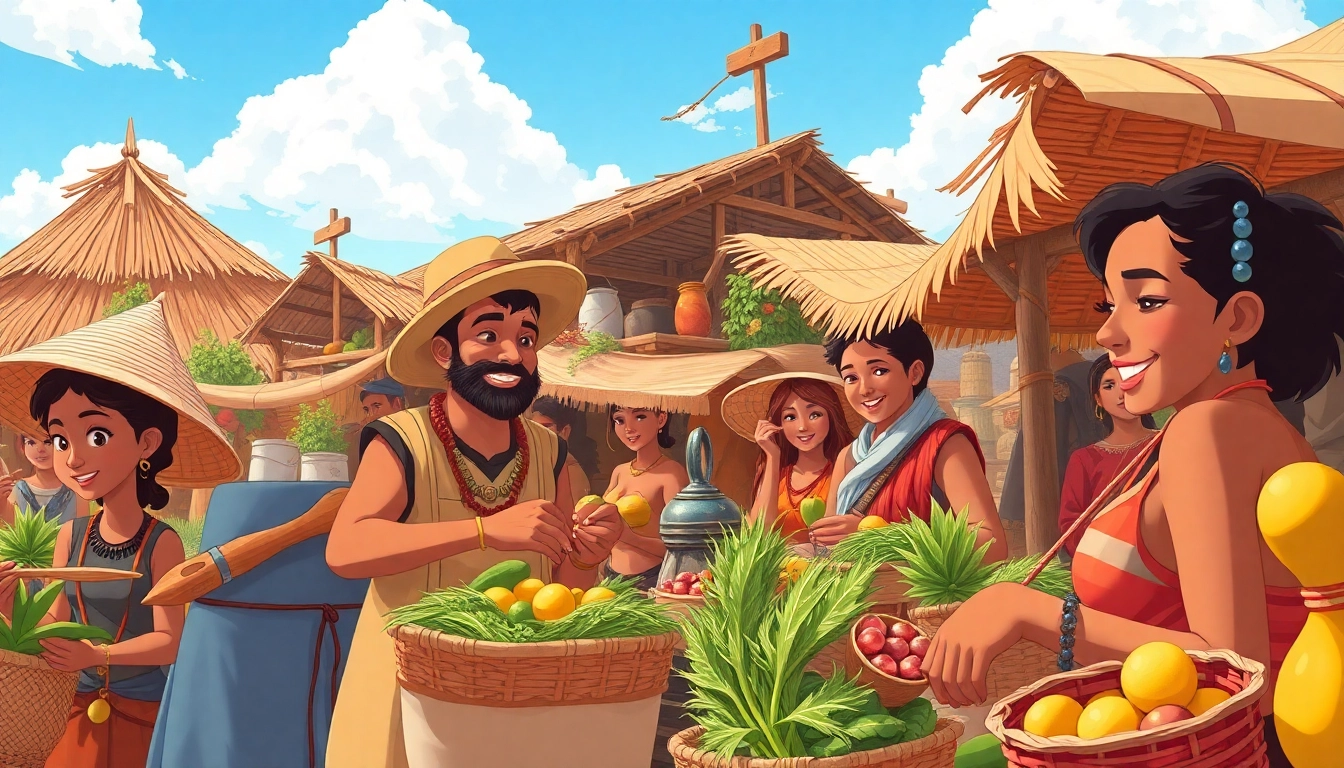Introduction to Traditional Economy
Definition of Traditional Economy
A traditional economy is an economic system that is predominantly guided by the customs and cultural practices of a community. It is characterized by the reliance on agriculture, hunting, fishing, and gathering. In this kind of system, economic decisions are shaped by historical traditions, and production methods remain largely unchanged over generations.
Historical Context and Evolution
Historically, traditional economies have existed since the dawn of human civilization, evolving as societies transitioned from nomadic lifestyles to settled agricultural communities. Significant milestones include the advent of agrarian societies, where food production became centralized, allowing for the development of communities and trade. However, many of these economies have faced challenges due to industrialization and modernization, leading to drastic shifts in how goods and services are produced and distributed.
Characteristics of Traditional Economy
Traditional economies are marked by several defining characteristics:
- Subsistence Farming: Most communities rely on farming for their sustenance, focusing on local needs rather than market demands.
- Bartering System: Instead of monetary transactions, goods and services are exchanged directly, fostering community ties.
- Cultural Practices: Economic activities are influenced by cultural traditions, and knowledge is often passed down through generations.
- Resource Ownership: Resources such as land and tools are commonly owned collectively or through family lines.
Key Features of a Traditional Economy
Customs and Traditions in Economic Systems
In a traditional economy, customs and traditions dictate the economic framework. Community members engage in activities that have been defined through generations, such as harvest festivals that determine the times for sowing and gathering crops. These customs serve not just as guidelines but as moral imperatives, fostering compliance and shared identity.
The Role of Barter and Trade
Bartering is a cornerstone of traditional economies. Since currency may not be prevalent or trusted, individuals exchange goods that they produce for those they need. For instance, a farmer might trade a basket of vegetables for fish caught by a local fisherman. This system fosters cooperation and strengthens community bonds, as each member contributes according to their skills and resources.
Resource Ownership in Traditional Economies
In traditional economies, the concept of ownership differs significantly from capitalist systems. Resources are often controlled collectively, emphasizing communal welfare. For example, land may be the heritage of the community, supporting collective agriculture or grazing rights. This structure emphasizes sustainability and conservation, as the community’s survival hinges on maintaining their environment over generations.
Comparing Traditional Economy with Modern Systems
Advantages of Traditional Economy
Traditional economies offer several advantages, including:
- Cultural Preservation: They preserve cultural identities and practices, maintaining a sense of belonging and continuity.
- Environmental Sustainability: Practices often align with ecological principles, reducing the likelihood of over-exploitation of resources.
- Community Solidarity: The reliance on barter and cooperative practices enhances community interconnectedness and fairness.
- Resilience: Communities often showcase significant resilience, adapting to environmental changes and resource scarcity through established practices.
Challenges Facing Traditional Economies
Despite their strengths, traditional economies encounter a myriad of challenges:
- Modernization Pressures: As globalization advances, traditional economies face pressure to adopt industrial practices, often leading to cultural erosion.
- Resource Depletion: Unsustainable practices, when they occur, can lead to resource depletion and a decline in the quality of subsistence.
- Limited Economic Growth: The non-monetary nature of these economies often stunts growth opportunities that require capital and investment.
- Climate Change: Changes in climate patterns threaten traditional agricultural practices, posing risks to food security.
Transitional Trends in Global Economics
The global economic landscape is increasingly complex. Traditional economies, once seen as stagnant, are now viewed through a lens of potential partnership with modern systems. Recent trends include:
- Integration with Market Economies: Elements of traditional economies are being integrated with market dynamics, allowing for both preservation and economic growth.
- Fair Trade Initiatives: Raising awareness of the rights of traditional goods producers aim to offer them fair prices and sustainable practices.
- Community-Based Tourism: This trend allows traditional communities to monetize their cultural assets without compromising their core values and practices.
Examples of Traditional Economy in Practice
Case Studies of Indigenous Economies
Indigenous communities across the globe maintain traditional economies that reflect their unique cultural identities. For instance, the Sami people of northern Europe engage in reindeer herding, utilizing centuries-old techniques that respect both their cultural traditions and environmental practices. Their economy is based on the sustenance provided by the herds, with bartering systems in place for goods that are not self-produced.
Modern Adaptations of Traditional Economy
In today’s evolving world, many traditional economies seek modernization while retaining their core principles. Some communities incorporate modern agricultural techniques while maintaining their unique cultural practices. For example, utilizing mobile technology to connect with broader markets allows artisan producers to sell their crafts while preserving traditional art forms.
Lessons Learned from Traditional Economy Systems
There are several key insights drawn from traditional economies that can inform broader economic practices:
- Community Focus: Traditional economies demonstrate the value of community welfare over profit, raising questions about modern business practices.
- Resource Management: Sustainable practices rooted in long-standing traditions highlight the significance of respecting ecological balances.
- Adaptability: The ability to adapt practices to shifting environmental conditions can serve as a model for resilience in a changing global economy.
The Future of Traditional Economy
Impact of Technology on Traditional Practices
Technology’s role in traditional economies is multifaceted. While it presents opportunities to innovate and improve efficiency, it can also undermine traditional practices. For instance, mobile phones enable remote access to markets, but they may also introduce dependency on non-sustainable practices. The challenge lies in finding a balance between the benefits of technology and the preservation of traditional ways of life.
Preservation of Cultural Heritage through Traditional Economy
Efforts to preserve cultural heritage can be deeply intertwined with traditional economic practices. Many traditional crafts, such as weaving or pottery, can be promoted through tourism or fair trade markets, thus ensuring their survival. Additionally, educational measures that address the importance of these practices can reinforce community identity and pride.
Strategies for Sustainability in Traditional Economies
To ensure the longevity of traditional economies, several strategies may be employed:
- Diversifying Income Sources: Encouraging complementary business models can provide essential economic resilience.
- Community Training & Education: Empowering community members with knowledge about sustainable practices and modern market trends fosters innovation.
- Partnerships with NGOs: Collaborating with organizations focused on sustainable development can enhance resource access and capability building for traditional communities.



